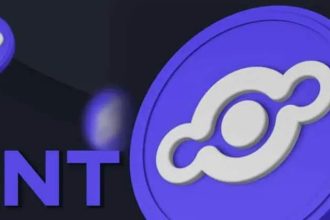Today, the Account Aggregator network is a method for exchanging financial data. It has given millions of individual’s better access to and control over their financial information, enlarging the potential market for lenders and fintech businesses. Access to the user’s private financial information, which is usually kept in silos, is made possible by Account Aggregator. With this, the banking industry will be opened up, and millions of users will have a safe internet connection and be able to share their data with other parties. The account aggregator framework technology can significantly reduce wealth management costs and increase loan speed. This is where you have some questions about the AA network.
So let’s learn about the most frequently asked questions about the Account Aggregators network in the following guide:
What is an Account Aggregator network?
The Account Aggregator is a particular class of RBI-regulated Company, and an individual can securely access and exchange information between any regulated financial institutions in the AA network. No information may be shared without the individual’s consent. There are many Account Aggregators available for selection. Account Aggregator networks, step-by-step consent and control to each usage of your data swaps the long terms and conditions form of a blank cheque contract.
What is an FIU?
The FIU stands for financial information user. To provide the end user with a range of services, an FIU requires data from a FIP, which is a financial information provider. For example, a lending bank needs access to the borrower’s data to determine the borrower’s loan eligibility. As a lending bank, the FIU serves. As both a FIP and an FIU, banks play two roles.
How might an AA stand out from the competition, and why should one enter this market?
You believe that the Indian market has room for numerous account aggregator frameworks.
- Due to its vastness and diversity, India requires many AAs to suit its needs.
- There are a number of specialised use cases and different user types with distinct needs.
- To continue to improve the user experience, new developments in informed permission-getting techniques are always appreciated.
- AA can act as a stepping stone to becoming a consent-managing organisation as other industries adopt analogous frameworks.
How will the new Account Aggregator network benefit a regular person’s financial situation?
Consumers currently have to deal with a number of inconvenient aspects of the financial system, such as exchanging physically signed and scanned copies of bank statements, rushing to notarize or stamp documents, and being required to provide your specific username and password to reveal your financial history to a third party. The simple, mobile-based, clear, and secure digital data access & sharing mechanism offered by the account aggregator framework would take their place. This will create opportunities for new services like different loan types. Just ask the person’s bank to join the Account Aggregator network.
Is membership in the AA ecosystem a requirement for all regulated entities?
No, members of the AA ecosystem are not required to follow the rules established by the Reserve Bank of India, insurance regulatory and development authority, or pension fund regulatory and development authority. However, the advantages of being an account aggregator framework member will definitely affect people’s pull-based choices to join the AA ecosystem.
Which kinds of data can be transferred?
Banking transaction data, such as bank statements from a current or savings account, can be shared between banks that have gone live on the network. Under the AA framework, the public will eventually have access to all financial data, including tax, pension, securities, and insurance information. Additionally, it will transcend beyond the financial sector to enable everyone to use AA to access communications and healthcare data.
Is each AA required to onboard every FIP separately?
Yes. These two principles form the foundation of the AA ecosystem:
- Allowing individuals to freely choose which RBI-licensed AAs would act as their consent manager and permit the transfer of their data from their FIP to their FIU.
- All AAs and FIPs can communicate through an open, non-customizable technical interface, allowing for the reuse of the technical work done by a FIP to enable connectivity with one AA for connectivity with other AAs.
Can AAs access or aggregate personal information?
Account Aggregators cannot independently analyse the data. Instead, they may only transmit it from one financial institution to another with a person’s permission and direction. Even with the name, they cannot aggregate your figures. AAs are not IT companies that aggregate your data and create comprehensive profiles of you. Only the recipient can decipher AAs data because the sender encrypts it. The process is far safer than sharing paper documents because of the exchange of digital signatures and end-to-end encryption.
Are all FIPs now associated with each Account Aggregator?
FIPs are integrating Account Aggregator modules into their systems to scale up the Ecosystem. Many FIPs have first started with just one or two AA accounts online. All FIPs are predicted to communicate with all Account Aggregators in the upcoming months because they all adhere to the interoperability principle. ReBIT has established standard protocols for APIs and security measures to ensure that a single implementation with one Account Aggregator is sufficient to merge with all Account Aggregators subject to an IP whitelisting and quick testing. As a result, there are no technological challenges in achieving compatibility.
Which extra services are offered to consumers whose banks have signed up for the AA network to enable information sharing?
The two critical services for a person that will be improved are access to loans and money management. To get a small business or personal loan nowadays, a consumer needs to present the lender with documentation. Obtaining a loan and having access to one takes longer now that the process is manual. Similar to how managing money can be challenging today due to data being stored in several locations and is challenging to compile for analysis.
What does the account connection option signify in an AA app?
The AA account online app users need to link to their FIPs to share data from such accounts with an FIU. Users must enter a distinctive identity such as their PAN number, customer registration number, or mobile number. This is FIP-specific for the FIP to locate your account during the joining procedure. Receiving an OTP from the user will allow the FIP to confirm that they are the account owner.
Is it possible for a consumer to opt not to disclose their data?
Yes. To join an AA account online is entirely up to the discretion of the individual consumer. When giving consent through one of the Account Aggregators at the stage of giving the bank the customer is using has joined the network, they can choose to register on an AA. Determine which accounts they like to link and transmit their data from one of their accounts for some clear purpose with a new lender or financial institution. The client always has the option to reject requests for authorization to share. If a customer has already agreed to the repeated sharing of personal data, they may later revoke that consent at any time.
Bottom Line:
Account Aggregator speeds up the loan application process so clients may get loans by enabling businesses to quickly and economically access secure, tamper-proof data quickly and economically. So finally, with the above-explained points, you got an answer to your questions.













